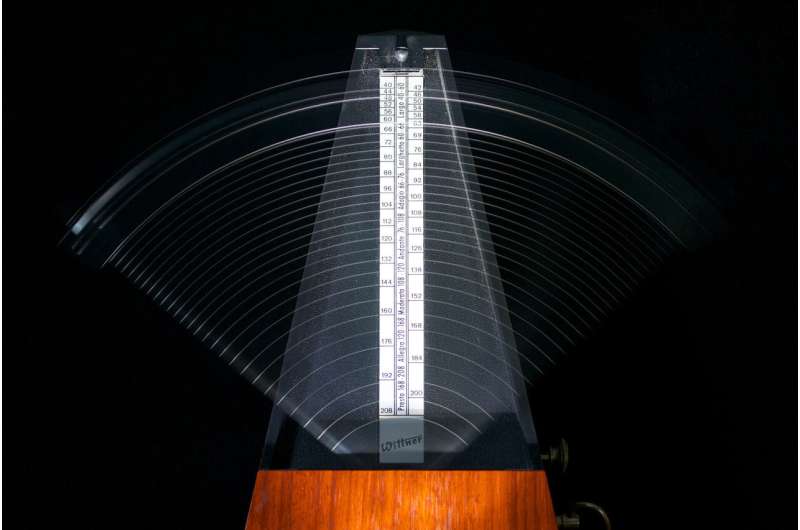Delayed neural communication may underlie anticipatory behaviors

Computational modeling suggests that delayed communication between neurons may be an essential factor underlying anticipatory behaviors in people. Irán Román of Stanford University in Stanford, California, and colleagues present these findings in PLOS Computational Biology.
When a person taps along to a metronome, they tend to tap slightly before the metronome clicks. This "anticipatory tendency" may also factor into other behaviors, such as people coordinating to row a boat or navigate a busy sidewalk. Scientists have proposed underlying mechanisms for the human anticipatory tendency, but none successfully account for all the observed real-life effects.
Previous research shows that when a physical system receives both an external stimulus and its own delayed activity as input, it can anticipate the stimulus. In the new study, Roman and colleagues hypothesized that, similarly, human anticipation involves delayed communication between neurons in one's sensorimotor system.
While the hypothesis has been described before, the researchers built a new computational model on the basis of that hypothesis. Then, they used the model to simulate various real-life tasks with delayed feedback, such as a person tapping along with every other beat of a metronome while listening to their own taps. They also simulated the same tasks without delayed feedback—not being able to hear one's own taps.
The model successfully reproduced real-life observations of anticipatory tendency in people. "This suggests that neural transmission delays play a key role in sensorimotor synchronization," Roman says.
It also suggests an explanation for why musicians typically tap closer to metronome clicks than do non-musicians under the same conditions. In order for the model to simulate the larger anticipatory tendency seen in non-musicians, the amplitude of the delayed feedback must be larger. This indicates that musical training might prune attention away from delayed neural signals, allowing a person to focus on external stimuli.
Next, the researchers plan to refine the model in order to account for the variance observed within and between humans during synchronization. Future work could further extend the model and test its predictions with real-life observations.
More information: Roman IR, Washburn A, Large EW, Chafe C, Fujioka T (2019) Delayed feedback embedded in perception-action coordination cycles results in anticipation behavior during synchronized rhythmic action: A dynamical systems approach. PLoS Comput Biol 15(10): e1007371. doi.org/10.1371/journal.pcbi.1007371
Journal information: PLoS Computational Biology
Provided by Public Library of Science




















